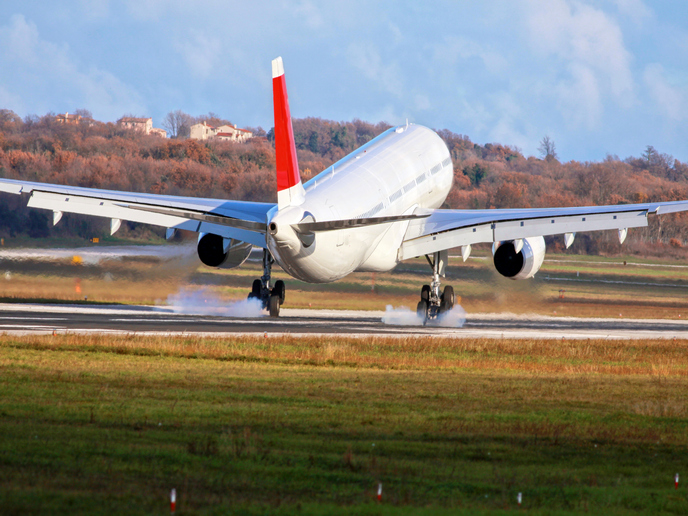Improved on-board structural health monitoring system for passenger aircraft
Regular inspections on aircraft structures are performed both during ground tests and when the aircraft is in operation. These inspections are carried out manually and require the test to be paused frequently and the aircraft to be grounded, resulting in significant cost implications.
Innovative technology now inspects aircraft in real time
Under Clean Sky 2(opens in new window), a public-private partnership between the European Commission and the European aeronautics industry, a team of researchers from the EU-funded DIMES(opens in new window) project worked on developing an integrated measurement system for passenger aircraft. The system monitors the condition of a structure – an airframe during flight – and finds damage or defects such as cracks or delaminations that appear in the structure. Eann Patterson, DIMES project coordinator, explains: “This system can monitor the condition of selected regions of a structure in real time and continuously during ground tests and potentially during flight.” It can identify indications of damage at a much earlier stage of its development than is usual in a manual inspection.
Advanced technology proves beneficial
The DIMES system has been demonstrated successfully in full-scale ground tests on part of a fuselage at Airbus in Toulouse, France and on a wing at Airbus in Filton, United Kingdom. “We have integrated traditional point sensors of strain, in the form of electrical resistance gauges, with more advanced optical sensors, including fibre Bragg gratings(opens in new window), infrared imaging and digital image correlation(opens in new window),” explains Patterson. All of these sensors are monitored locally using credit card sized computers that can be accessed remotely to review the data. The cost, power requirement, volume and weight of the integrated system are small enough to make its deployment on board an aircraft viable.
Remote installation system steps in during the pandemic
The team produced an outline design for the system in under 4 months. A year later, as the pandemic shut down their labs, they had a first working prototype installed in a section of an aircraft wing on a test bench at Empa(opens in new window), the Swiss Federal Laboratories for Materials, Science and Technology in Zurich, Switzerland. This was a huge achievement. “While the pandemic delayed the project, particularly the demonstrations at Airbus sites, it stimulated the development of a remote installation system which allowed members of our team in Switzerland and the United Kingdom to guide in real time the installation of our integrated measurement system into a cockpit at Airbus in Toulouse,” adds Patterson. The success of this project was built in part on the long-term relationship between the partners and Airbus and in part on previous projects, including the Clean Sky 2 project INSTRUCTIVE that made significant advances in the infrared measurement technology. A PhD studentship was also funded by the Engineering and Physical Sciences Research Council(opens in new window) in the United Kingdom and Airbus, which led to new algorithms for processing images to identify indications of damage. In the long term, there is likely to be a change in the methodology to condition-led inspections of aircraft structures that for ground tests will allow them to run 24/7 and save about 3 months in every 12 months of testing. “This will help reduce the development times for new aircraft,” concludes Patterson.







